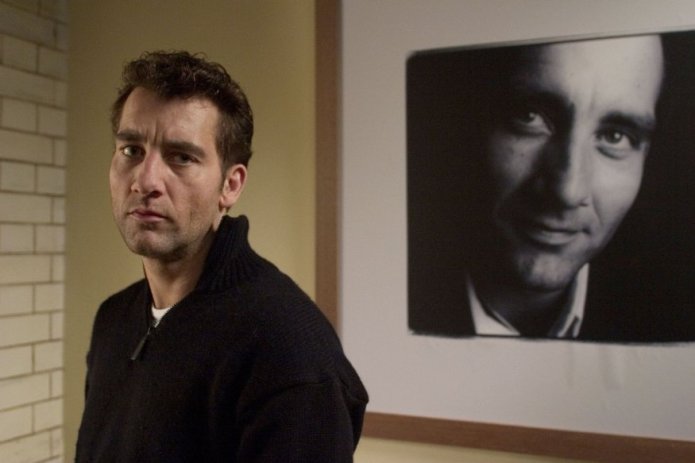Human relationships seem to be governed by specific and unknown laws of entropy, which dictate the rhythms of bodies coming together and drifting apart, very much like the physical particles assembled in their bodies and minds. November 19th of the current year marks the departure of one these macro particles. This is not an obituary (dear lord, far from that) for Mike Nichols, but a brief reflection about the work of someone that seemed to me to be interested in exploring some of the aforementioned laws.
Was it not due to my terrible memory regarding movie directors, Nichols would have remained in my mind as the assembler of the (literally) human puzzle that was Closer (2004). However, a quick glance reminded me that he was not only responsible for this fantastic movie, but also by two other key works in my cinematic life. And no, I am not referring to the Oscar winning The Graduate (1967), which I have yet to experience.
I first experienced the work of Nichols with Angels in America (2003), a Broadway play adapted to the (small) screen. Incidentally, it was also my first contact with an HBO production, so you can see how this worked out. This a portrayal of gay individuals in an America filled with prejudice and AIDS, but it is, most of all, about the connection between human beings surpassing the cultural and physical barriers of bodies, customs and genders. Throughout the narrative, spanning two episodes, this connection seems to occur in a dimension unseen but not unfelt. That the movie embraces religious contexts (in a quite unique way) is very coincidental with this extra-physicality, very rooted on human beings themselves. Death and the fear of the dissolution of the human body seem to enhance precisely this longing for a heavenly existence without barriers of any kind. In a time where many societies seem to actually be regressing in the ways the homosexuals are treated, with prejudice and extreme religiosity spreading like a disease, it remains a very actual comment on the fundamental struggle of these communities. Despite of its theme, it is also, to this day, one of the most remarkably natural ways that I have seen gay individuals represented in cinema.

About a year later, I remember seeing Closer in a movie theater. I recall wanting to see the movie alone, since from the trailer alone I felt something unfamiliar and uncomfortable (so… in retrospect, perhaps too familiar instead?). I was not mistaken. This is the story of four bodies. That they also have minds seems just a coincidence, such is the physical strength that binds and repels them throughout the movie. They meet by accident, but probably not incidentally, and then they fall in love, they have sex, they get confused, they fall out of love. They fight, kiss, argue, embrace, hurt each others, many times simultaneously. It is tangled mess of human beings with an urge to get into an even closer, painful proximity. Their meaningful stares and body postures are sometimes pleading, other times defiant, but always uniquely captured in Nichols’ camera lenses. It is a movie that feels very alive, a transient jolt of energy in motion into a different state, well after the end.

I later saw what was Nichols’ first movie, Who’s Afraid of Virginia Woolf? (1966). Looking back now, in my mind a quite obvious connection is formed between this movie and the latter Closer. It seems like an exercise in disobeying the laws of entropy in human connections, the consequences of pushing the boundaries of such assemblies. We are invited into watching an unravelling, alcohol fueled discussion between a middle aged couple in a long relationship. Invited by a younger couple (a counterpart to the older couple, and our proxy as uncomfortable bystanders) to a get-together, as the night progresses, their fight gets more vicious, more violent, more personal and more devastating. That two people can turn love into such an emotionally damaging connection is terrible. That they actually grew dependent on this sort of relationship, as it becomes clear during the movie, is even worse. The intensity is such that I felt something for the first time watching a movie so far (and only in a couple occasions more ever since). I was uncomfortable watching the scenes, to the point that I felt physically sick. The discussion developed into such personal grounds that I felt it was none of my business to be watching. And yet, the tension is so grasping that, like in a car crash, one cannot help himself to look away. It is a horrible story, but a beautiful, very powerful, piece of cinema.

Despite not penning the script of any of these movies, the remarkable skill of Mike Nichols to provide the perfect context and framing of his cinematic subjects is fundamental in creating pulsating, raw experiences that leave one completely and absolutely disarmed.
“Have you ever seen a human heart?”, asks Larry, to desperate Dan. “It looks like a fist, wrapped in blood”. Nichols knew how to show this. The sheer physicality of human bodies, the raging ability of such bodies to feel passionately, to battle desperately, to love violently. Beating you into a shamble of ambiguous senses.


